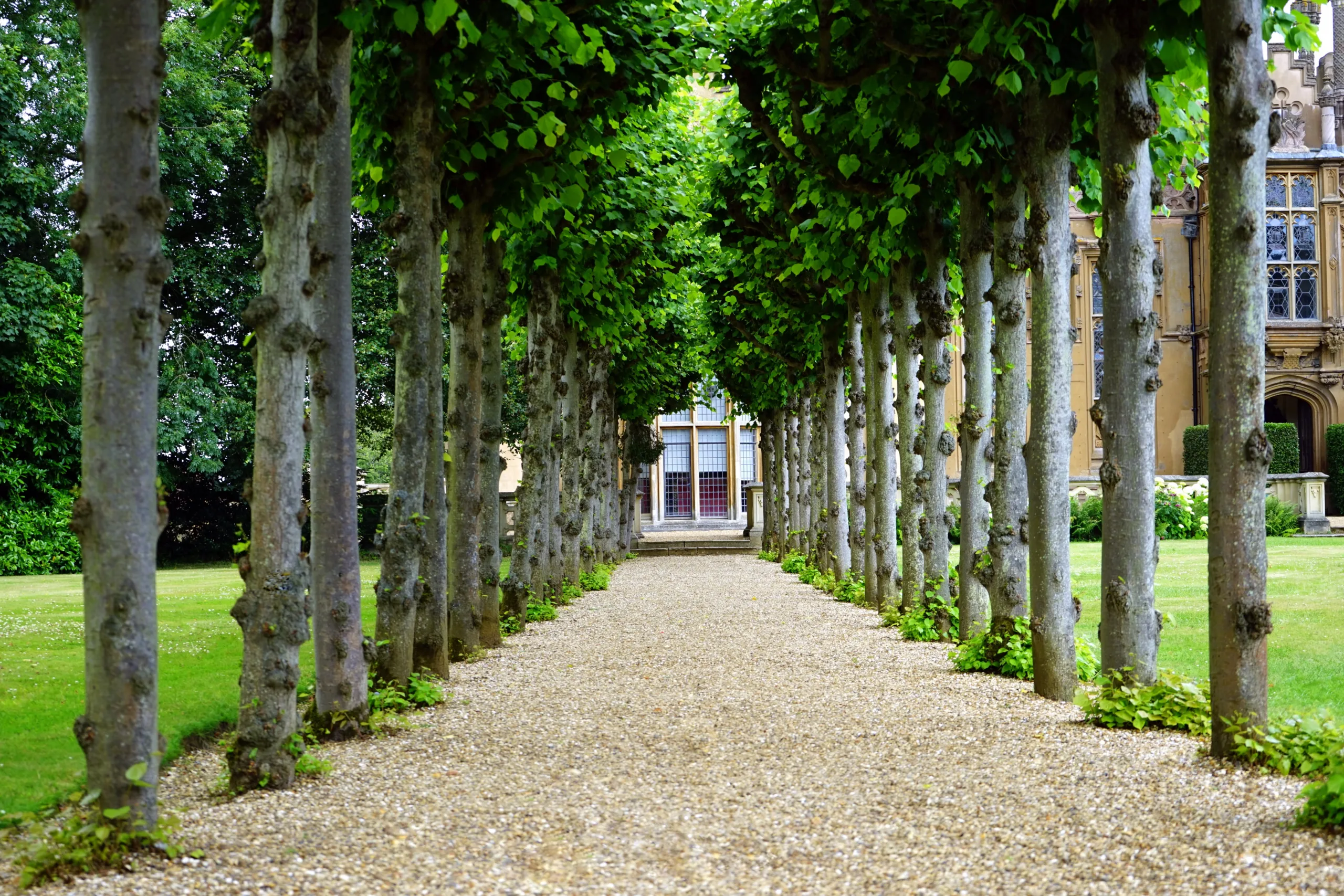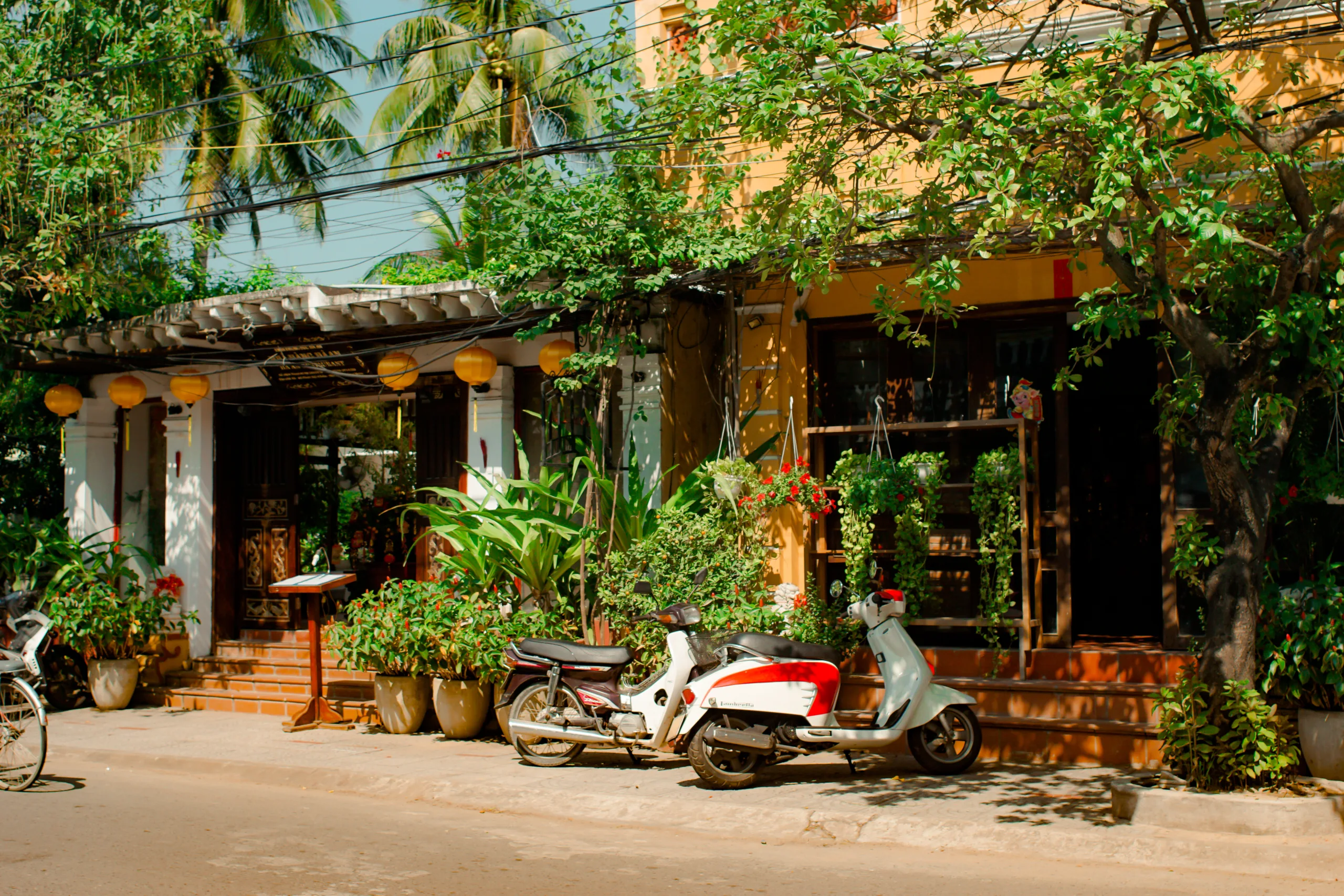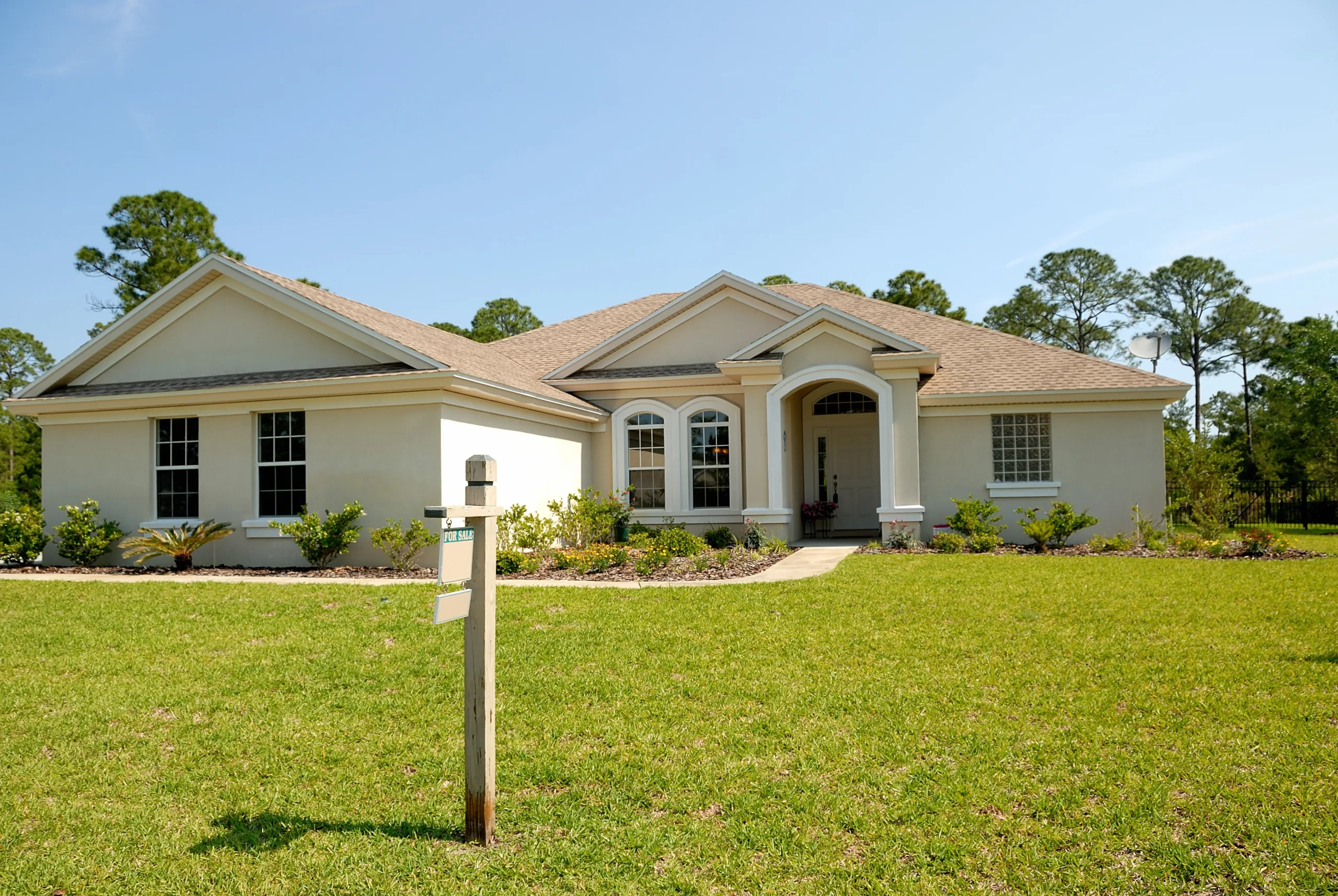Having a beautiful front yard is an important part of creating a great first impression for visitors. But it can be difficult to choose the right trees to plant in your front yard. Whether you want to create some shade, attract wildlife, or just add beauty, there are plenty of options available. In this article, we’ll explore the best trees to plant in your front yard, so you can find the perfect one for your home.
Planting trees in your front yard can provide numerous benefits. Trees can reduce air pollution by removing harmful particles from the air, provide shade to help keep your home cool, and create a beautiful landscape to enjoy. Additionally, trees can increase the value of your home and help reduce noise pollution by providing a natural sound barrier.
Choosing the Right Trees for Your Front Yard
When choosing trees for your front yard, it’s important to select ones that are well suited to the climate and environment of your area. Consider factors such as sunlight exposure, soil type, and space limitations when selecting trees for your front yard. You’ll also want to take into account the size and shape of the tree as well as how much maintenance you’re willing to do in order to keep it healthy. Here are some tips for choosing the right trees for your front yard:
• Choose trees that are native to your area; these will be easier to maintain and more likely to thrive in their natural environment.
• Think about what type of look you want for your front yard. Do you want larger trees with wide canopies? Or would smaller, more ornamental trees be better suited?
• Take into account how much sunlight is available in your front yard; some trees require more sun than others.
• Consider soil type when selecting a tree; some trees require more moisture or drainage than others may need.
• Think about how much maintenance you’re willing and able to do, such as pruning and fertilizing. Some types of trees require more upkeep than others.
By taking these factors into account, you can choose the perfect tree for your front yard that will thrive in its new home and provide years of beauty and enjoyment!
Location
The location of a tree in a front yard is an important consideration. Planting trees too close to the house or driveway can lead to problems with foundations, roots, and shade. Trees should also be planted away from power lines and underground utilities to avoid potential damage from roots or branches.
Size
The size of the tree should also be taken into account when planting in a front yard. Selecting smaller varieties that will not outgrow their space can help to ensure that the tree remains healthy over time and does not become a nuisance or safety hazard. Consider how large the tree will grow before selecting a variety to ensure it will not interfere with structures or pathways.
Species
When planting trees in a front yard, it is important to select the right species for the space. Different trees have different soil, water, and light needs and selecting one that fits the conditions of your front yard can help to ensure its success over time. Consider native species that are adapted to your area for best results.
Care
Proper care is essential for keeping any tree healthy and safe in a front yard setting. Trees should be regularly pruned and monitored for signs of disease or insect damage so that any issues can be quickly addressed. Regular watering and fertilizing can also help keep trees looking their best over time.
Caring for Different Types of Front Yard Trees
Caring for trees in your front yard is important, as it can help ensure the health and longevity of the tree. Depending on the type of tree you have, there may be additional considerations that need to be taken into account. Here are some tips for caring for different types of front yard trees:
Evergreen Trees
Evergreen trees are a popular choice for many yards due to their ability to provide year-round color and texture. To keep your evergreen trees looking their best, it is important to prune them regularly. Pruning should be done at least once a year, preferably in early spring before new growth begins. Additionally, fertilizing evergreens during the winter season can help keep them healthy and vibrant.
Fruit Trees
Fruit trees are a great addition to any front yard, as they can provide delicious fruit throughout the growing season. To ensure that your fruit trees produce the best fruit possible, it is important to prune them regularly and maintain proper soil nutrition levels. Fertilizing your fruit trees twice per year – once in early spring and once in mid-summer – will help keep them healthy and productive. Additionally, you should make sure to water your fruit trees regularly and protect them from pests or disease by monitoring for signs of infestation or disease throughout the growing season.
Deciduous Trees
Deciduous trees are known for their vibrant fall foliage and can add a beautiful touch to any front yard landscape. To keep these trees healthy and vibrant, it is important to prune them regularly and fertilize their soil at least twice per year – once in early spring and again in mid-summer. Additionally, these types of trees require regular watering during dry periods but should not be overwatered or allowed to stand in standing water as this can lead to root rot or other damage.
Best Shade Trees To Plant In a Front Yard
Choosing the best shade tree to plant in your front yard can be a daunting task. With so many options available, it can be difficult to decide which tree is right for your particular environment. Fortunately, there are a few key criteria that can help you narrow down your choices and make a wise decision.
When selecting the best shade tree for your front yard, the size and shape of the tree should be taken into consideration. Upright trees will provide more shade than those that spread out horizontally. It is also important to consider how tall the tree will grow and if it will fit into the existing landscape of your home.
Another important factor to consider when picking a shade tree is its growth rate. Fast growing trees offer immediate relief from summer heat, while slower growing trees may take several years before they reach their full size. Consider how much time you are willing to wait for full coverage before making your decision.
You will also want to think about how much maintenance a shade tree requires once it is planted in your yard. Some trees may need more frequent pruning or fertilizing than others, while some varieties produce messy fruits or flowers that may require extra clean up. Consider these factors carefully before selecting a particular species of tree.
Finally, think about what type of climate your front yard is in and pick a species of tree that will thrive in those conditions. Some trees may do better in hot climates while others prefer cooler temperatures, so do some research and make sure you choose one that will thrive in your area’s climate conditions.
Overall, choosing the best shade tree for your front yard can be tricky but with careful consideration it can be done successfully! Think about the size and shape of the tree, its growth rate, how much maintenance it requires, and what type of climate it prefers so you can pick one that will fit perfectly into your existing landscape design!

Growing Privacy Trees For a Front Yard
Creating a private outdoor space is an important part of landscaping for many homeowners. Privacy trees can be an effective way to add beauty and shade to your front yard while also providing a shield from prying eyes. The right tree can add value to your home, and if you select a fast-growing variety, you’ll be able to enjoy the benefits sooner. Here are some of the best fast-growing privacy trees for your front yard.
The Leyland Cypress is a popular choice for a fast-growing privacy tree. It grows quickly, reaching heights of up to 40 feet in just 10 years. It has bright green foliage that is dense and provides excellent coverage. It prefers full sun and moist, well-drained soil, and it is tolerant of most soil types. It does not tolerate wet soils very well and needs regular pruning to maintain its shape.
The Eastern Red Cedar is another great choice for fast-growing privacy trees. This evergreen tree can reach heights of up to 40 feet in 10 years or less. Its dark green foliage provides excellent coverage and looks great all year round. It prefers full sun but will tolerate partial shade as well. It is drought tolerant once established but needs regular watering during the first year or two after planting.
The Thuja Green Giant is an excellent choice for those looking for quick growth and maximum coverage. This evergreen tree can reach heights of up to 50 feet in just 10 years, making it one of the fastest growing privacy trees available. Its bright green foliage provides excellent coverage and looks great all year round. It prefers full sun but will tolerate partial shade as well, so it’s perfect for areas with limited sunlight.
The American Arborvitae is another great choice for those looking for fast-growing privacy trees. This evergreen tree can reach heights of up to 40 feet in just 10 years or less, making it one of the fastest growing privacy trees available today. Its soft green foliage provides excellent coverage and looks great all year round. It prefers full sun but will tolerate partial shade as well, so it’s perfect for areas with limited sunlight.
The White Spruce is a popular choice for those looking for fast-growing privacy trees with good wind resistance. This coniferous evergreen reaches heights of up to 60 feet in just 10 years or less, making it one of the fastest growing privacy trees available today. Its dense foliage provides excellent coverage and its strong branches make it ideal for windy areas where other trees may not survive.
No matter what type of fast-growing privacy tree you choose, make sure you give it plenty of room to grow by planting at least five feet apart from neighboring plants or structures such as buildings or fences. Also keep in mind that some varieties may require regular pruning or trimming to maintain their desired shape or size over time. With proper care and maintenance, these beautiful trees can provide your front yard with much needed privacy while adding beauty and value to your home!
How To Choose the Right Size Tree For Your Front Yard
When it comes to landscaping, selecting the right-sized tree for your front yard is essential. It’s important to consider the overall size of the tree and its height when making a selection. You should also consider how much sunlight the tree will get in your location, as well as how much maintenance it will require. Here are some tips on how to choose the right size tree for your front yard.
The first thing you should consider is the overall size of the tree when it is fully grown. If you have a small front yard, then you should choose a small-sized tree that won’t take up too much space. On the other hand, if you have a large front yard, then you can select a larger-sized tree that will provide more shade and coverage. Make sure that you select a tree that fits in with your landscape design and won’t be too overpowering.
You should also consider how tall the tree will be once it is fully grown. If you don’t want your house or other structures to be overshadowed by a large tree, then choose one that won’t grow too tall. Also keep in mind that some trees grow very quickly and could reach their full height within just one or two years.
Another important factor to consider is how much sunlight your chosen tree will receive once planted in your location. Trees need direct sunlight in order to grow and thrive, so make sure that you select one that will get enough sun throughout the day. You can also choose trees that are more tolerant of shady conditions if necessary.
Finally, consider how much maintenance the chosen species of tree requires. Some species require more frequent pruning and trimming than others, so make sure that you select one that won’t require too much work on your part. Once you have selected the right size tree for your front yard, be sure to properly care for it in order to ensure its growth and longevity!
Popular Types Of Trees To Plant In a Front Yard
When it comes to creating a beautiful landscape in your front yard, trees are a great addition. Not only do they provide shade and texture, but they also add character to your home. But with so many types of trees to choose from, it can be difficult to decide which ones are best for your property. Here are some of the most popular types of trees to plant in a front yard:
Oak trees are an excellent choice for front yards because they bring beauty and longevity. They can reach heights up to 80 feet and live for hundreds of years. Additionally, their broad canopy provides plenty of shade during hot summer months.
Maple trees are another popular choice for front yards because of their vibrant fall foliage and attractive bark. Maple trees come in a variety of sizes, so you can find one that fits your space perfectly. They also have relatively shallow root systems, making them ideal for creating curb appeal without damaging sidewalks or driveways.
Dogwood trees are a great option if you’re looking for year-round color in your front yard. Their white flowers bloom in the springtime, followed by red berries in the summer and bright yellow foliage in the fall. Plus, they’re relatively low-maintenance and don’t require much pruning or fertilizing.
Cherry trees are perfect for those who want to add a touch of elegance to their home’s exterior. These ornamental trees bloom with delicate pink flowers in the springtime and have bright green foliage during the summer months. Plus, they’re low-maintenance and have shallow root systems that won’t damage sidewalks or driveways.
No matter what type of tree you choose, it’s important to research its growth rate and mature size before planting it in your front yard. This will help ensure that your tree won’t outgrow its designated space or require too much maintenance over time. With careful consideration, you can find just the right tree for your property’s needs!

Conclusion
The best trees to plant in your front yard depend on several factors, such as the size and shape of your front yard, the amount of sun and shade it receives, and the type of climate in which you live. Some of the best trees to consider planting include Japanese maple, flowering cherry, magnolia, and American elm. All of these species offer beautiful foliage and can provide shade for your home. When selecting a tree for your front yard, be sure to choose one that is appropriate for your area’s climate. Consider factors such as its growth rate, size at maturity, and its soil and moisture needs. Planting trees can provide many benefits to you and your home, such as improving air quality, providing shade from the sun’s rays, increasing property values, and reducing energy costs. With proper planning and research you can find a great tree that will fit perfectly in your front yard.
No matter what type of tree you choose for your front yard landscape design — whether it’s a Japanese maple or an American elm — be sure to research the species thoroughly before planting. Learn about its growth rate, size at maturity, soil needs, water needs, pest problems it may have in your area, and any other information that will help ensure success with this new addition to your landscaping plan. With a little bit of effort you can create beautiful curb appeal with just one tree!
Mark Hoffman is a dedicated arborist and tree care specialist with over a decade of experience. His love for trees began when he visited Yosemite National Park as a teenager and was awestruck by the giant sequoias. Mark pursued his passion by studying forestry at Michigan Technological University, where he earned a Bachelor of Science degree.
Since then, he has worked tirelessly in the field of arboriculture, helping to preserve and protect trees in his community. His expertise and dedication have made him a respected leader in the industry and a valuable resource for anyone seeking advice on tree care.
